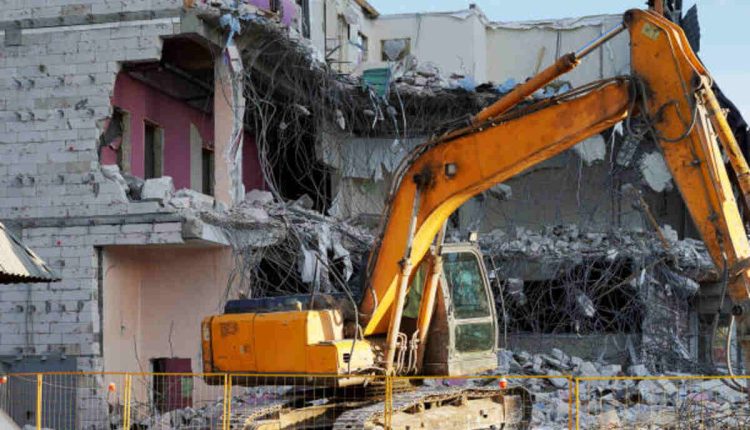UDTs – precursors of today’s Navy SEAL teams – executed daring missions during the Korean War that considerably altered military strategy and outcome. Led by legendary Admiral Draper Kauffman and with a training regimen that helped form these elite units, this article chronicles their development and legacy. Find the best Demolition Corpus Christi.
Before an amphibious landing could begin, UDTs were assigned the task of conducting comprehensive sweeps over beaches and waters, looking for any obstacles that might obstruct landing craft from coming ashore and dismantling them as quickly as possible.
History
Underwater demolition has been utilized in war since WWII, making its history an intriguing tale of courage, innovation, and daring missions. Discover how the forebearers to today’s Navy SEAL teams helped shape both military strategy and operational outcomes through their groundbreaking efforts.
In 1943, the Navy found itself without access to hydrographic data that enabled it to accurately select beaches suitable for amphibious landings and identify fortifications that might obstruct landing craft – leading them to create Naval Combat Demolition Units (NCDU), precursors to today’s UDTs. Equipped with minimalist fins and masks, these frogmen conducted clandestine raids against enemy hardware or coastal facilities.
NCDUs demonstrated their adept demolition expertise and waterborne swimming ability on every central amphibious landing in both sea and land environments across the Pacific during their deployments, from providing wave guides for Inchon landings to conducting nighttime raids behind enemy lines in Korea – from Inchon wave guides to nighttime raids behind enemy lines; from conducting dangerous nighttime raids behind enemy lines in Korea. They indeed proved themselves an indispensable resource.
Combat divers were the precursors to today’s Navy SEAL teams. Their bold, risk-taking exploits laid the groundwork for modern SEAL operations, which have since taken part in numerous missions worldwide from Vietnam to Afghanistan – expanding on their legacy while further expanding Navy special operations capabilities. Read on to discover more of UDTs’ fascinating past and storied success!
Training
Navy SEAL training is a strenuous journey that can test even the most dedicated candidates to their limits. It demands physical fitness that exceeds military standards for push-ups and swimming, with Hell Week lasting five grueling days that put mental resilience alongside physical strength under strain.
Underwater Demolition Teams (UDT), known as the forebear of modern Navy SEAL teams, first established themselves during World War II to clear underwater structures and hardware that might impede naval craft or cause harm to infantry landings on enemy beaches. Their training took place on Maui, where their base included basic tents, an uncooperative mess hall, and open-air showers – popularly dubbed as frogmen!
BUD/S is a 24-week journey encompassing intense physical training, weapons and demolition instruction, and survival techniques. Candidates must meet high mental aptitude and emotional standards in order to pass. Instructors from the Navy’s elite special operations unit instructors are known for verbally abusing candidates and physically challenging them in order to advance them towards SQT training – some say the program can even be more challenging than climbing Mount Everest!
Equipment
Underwater demolition refers to the systematic destruction or neutralization of artificial and natural underwater obstacles for military or civilian purposes, such as piers, jetties, breakwaters, and harbor structures, as well as wreckage from maritime disasters.
Safety equipment needed for underwater demolition includes scuba gear, closed-circuit rebreathers, and surface-supplied diving systems. Submersion times depend on both breathing apparatus capacities and the availability of gas supplies.
During World War II, the Navy created Underwater Demolition Teams (UDTs) to clear obstacles for amphibious landings. A total of 34 UDTs were formed, and Lt Commander Draper Kauffman became known as the “Father of Naval Combat Demolition.” Two schools for underwater demolition training were opened by Lt Commander Kauffman himself.
UDT members provided vital skills and expertise during Navy operations of this period, setting the foundation for future SEAL teams. This gripping book explores their storied history from their initial establishment by Draper Kauffman through critical UDT operations such as Chromite at Inchon, Christmas Eve Raid on Hungnam Waterfront Facilities, and FISHNET.
Safe Work Method Statement (SWMS) development is essential in order to protect workers engaged in underwater demolition operations. For help getting started, our work health and safety experts have put together some helpful advice you can incorporate into your SWMS in order to cover all risks related to the task at hand.
Safety
Demolition projects are always dangerous endeavors. Potential hazards for demolition projects include structural instability of buildings and structures, contamination of water supplies and marine life, flammable materials, and restricted spaces; extended submersion under water may cause decompression sickness and fatigue while this work is mentally demanding and lack of communication between team members can impede emergency response efforts.
As these hazards present a genuine danger to workers, it’s vitally important to develop a Safe Work Method Statement (SWMS) prior to beginning any project. This should address both specific tasks that must be accomplished as well as measures taken by management or experienced professionals who specialize in that type of work to safeguard employees from harm. Consulting such experts could give valuable insights into potential risks and suggested measures of protection for workers.
During World War II, combat demolition units – precursors of today’s Navy SEALs – were created. Equipped with fins, face masks, and swimwear, they would perform stealth infiltrations of enemy beaches prior to invasion; their commanders ordered media blackouts so important would remain virtually unknown to the general public.
Read also: Building Demolition Contractors.










